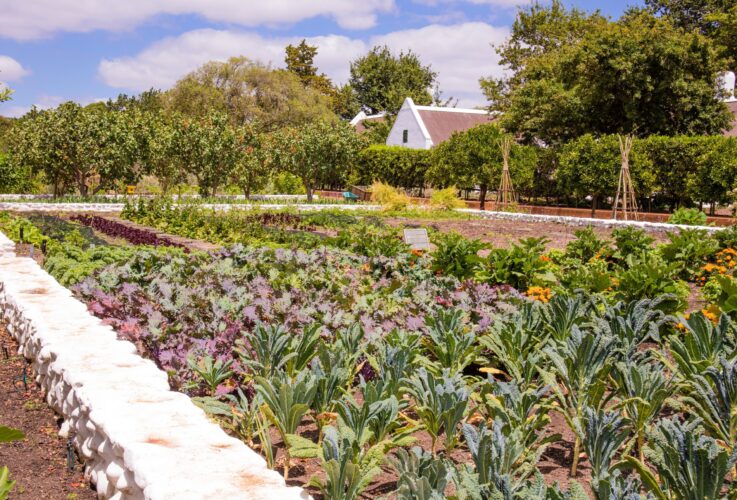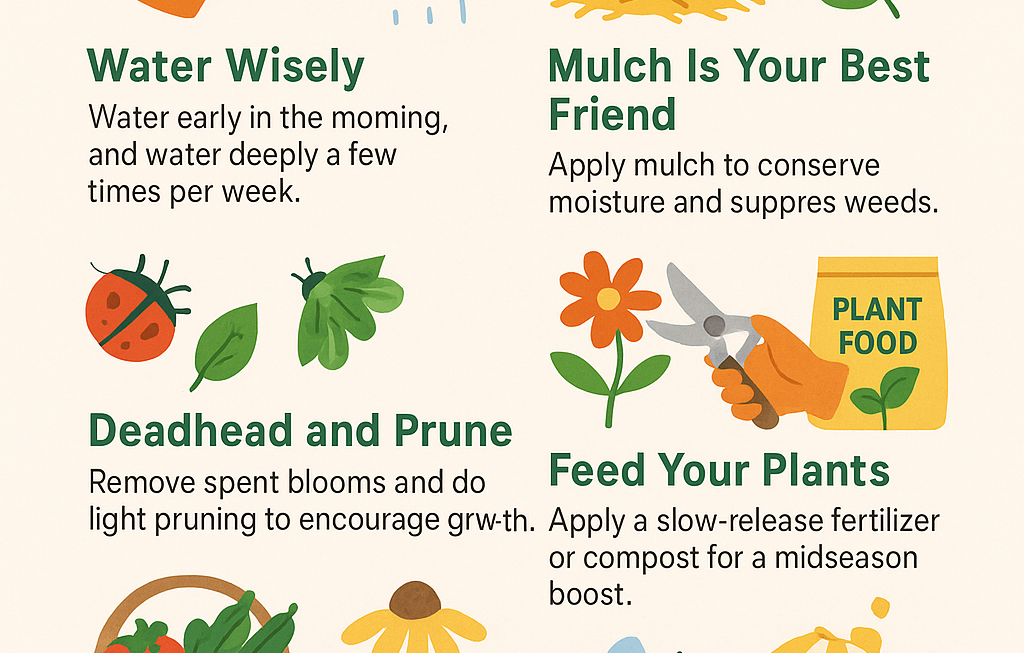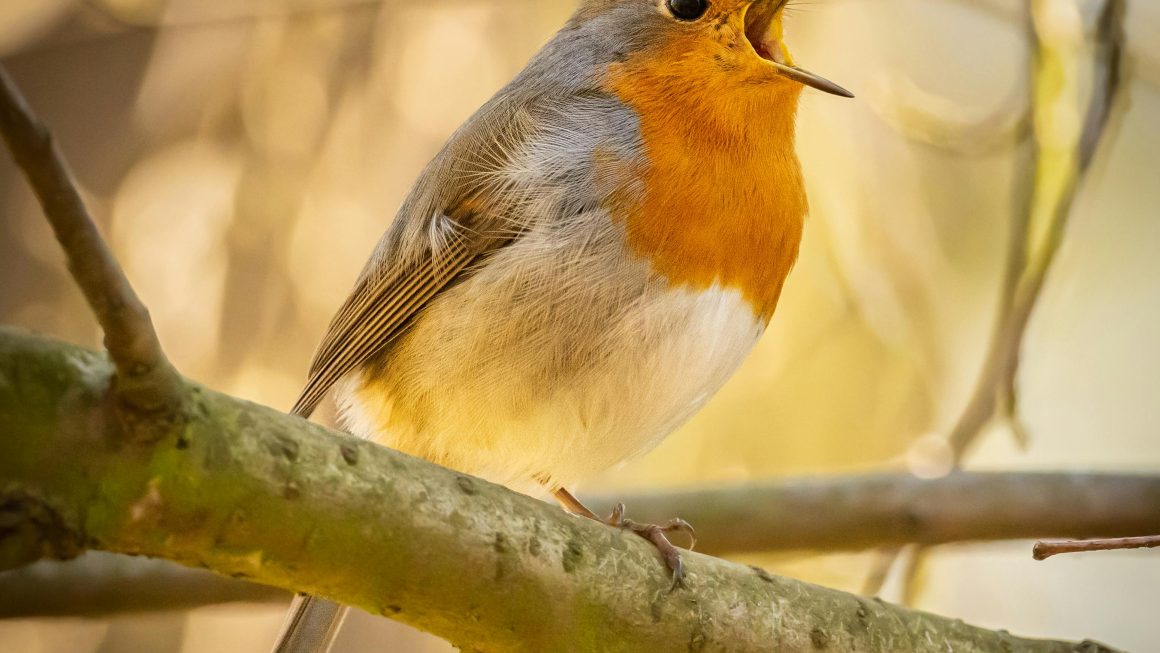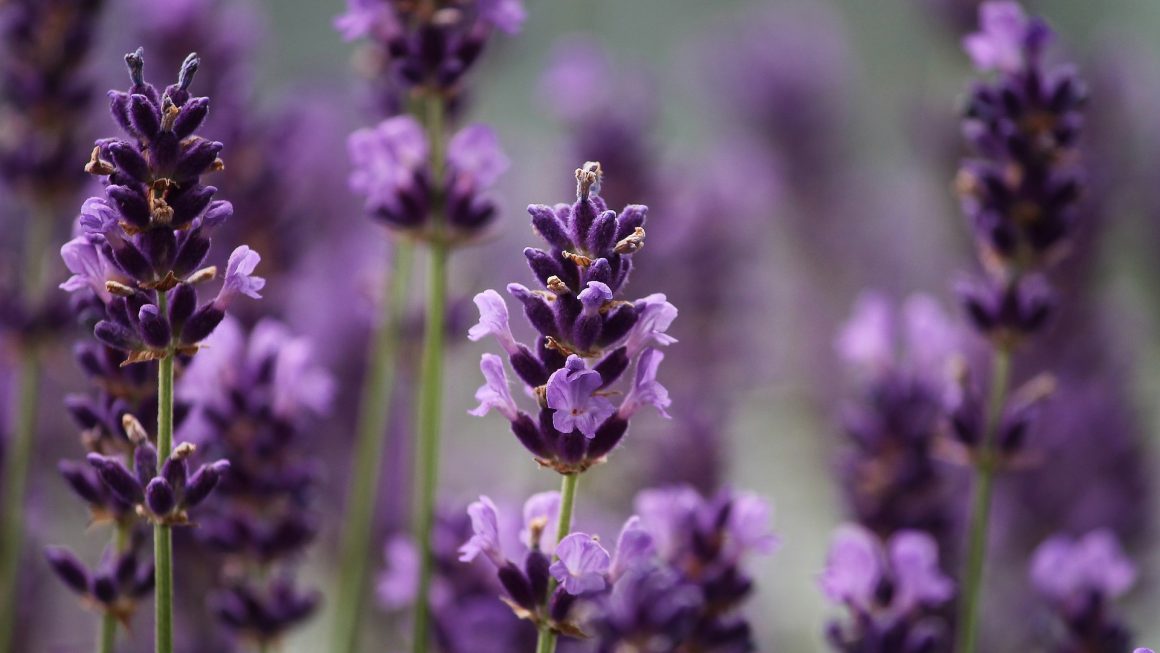This post may contain affiliate links. Please see my disclosure policy to learn more.
What does “Full Sun” mean for plants? When you see Plant in “full sun” on a label, it means that the plant needs direct sunlight for at least 6 to 8 hours a day. These 10 plants and flowers do well in sunny areas and are often drought-resistant. Meaning they do well with below-normal precipitation.
Bee Balm
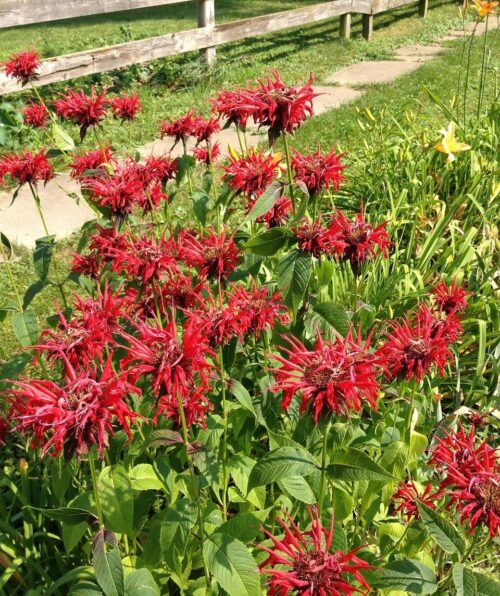
Bee Balm – Scientific name Monarda, other common names include bee balm, bergamot, horsemint, and oswego tea. Bee Balm is a flowering plant in the mint family, with beautiful blooms available in red, pink, purple, or white. Bee Balm thrives in full sun and will add color and beauty to any garden.
Catnip
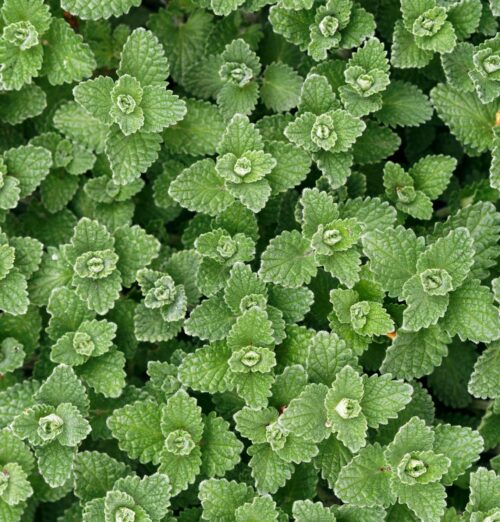
Catnip – A member of the mint family, also known as catmint or catwort. Catnip is drought-tolerant and prefers full sun; they don’t mind a bit of afternoon shade, especially when grown in hot climates. These hearty plants can be grown in almost any area of the garden as long as it’s in well-draining soil. Wet locations can lead to root rot.
Columbine
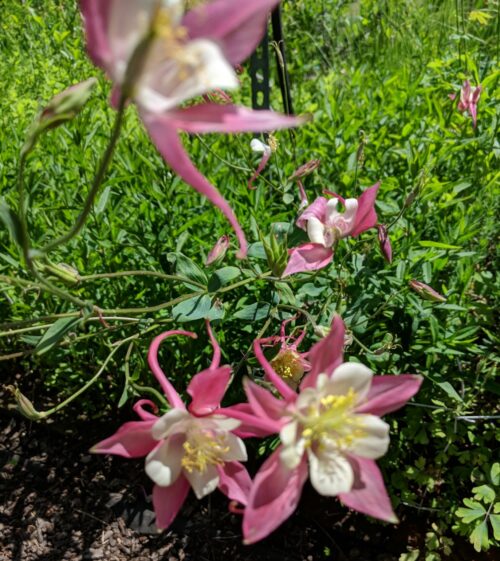
Columbine – An easy-to-grow flower that comes in a variety of colors. Columbines enjoy full sun to partial shade and are often an attractant for hummingbirds. Established columbines are drought-tolerant perennials that re-seed and spread easily.
Hardy Geranium
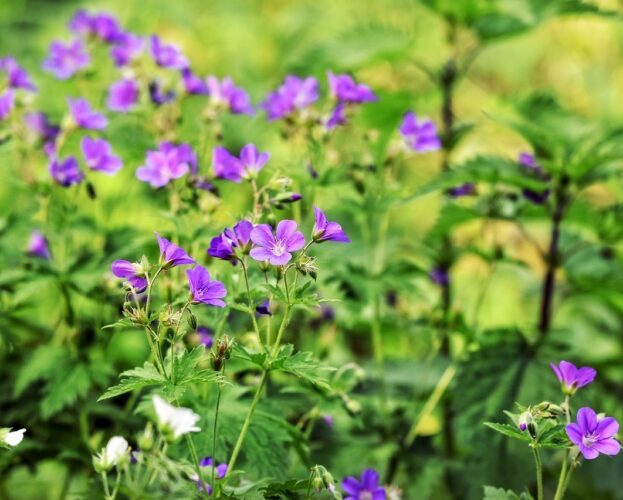
Hardy Geranium – Hardy Geraniums are perennial and available in over 300 varieties, most widely seen in pinks, purples, blues, and whites. Most do well in full sun to partial shade and they prefer well-draining soil. The warmer the climate, the more the plants will appreciate some afternoon shade
Lavender
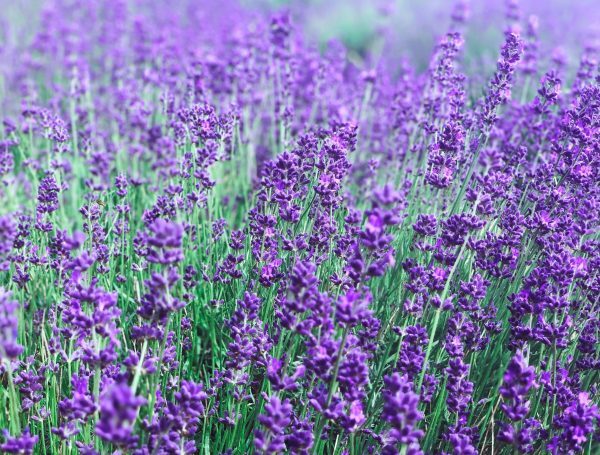
Lavender – A shrubby perennial plant in the mint family, lavender is grown for its flowers and fragrance. Lavender does well in full sun and hot, dry conditions. It is suitable for use in a variety of landscape settings and is an excellent candidate for areas prone to drought.
Peony
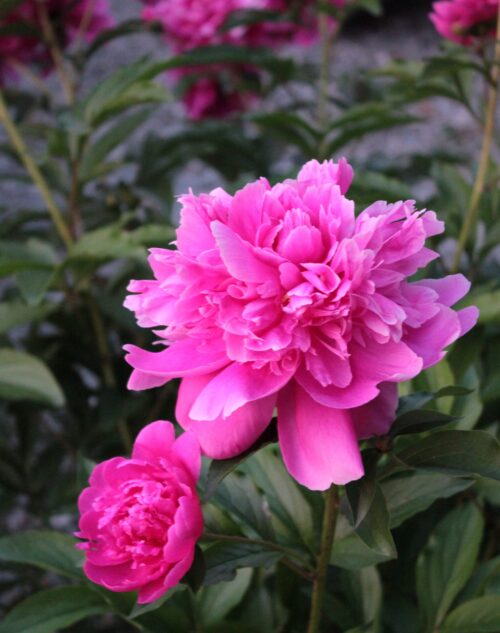
Peony – Peonies like sunny locations and well-draining soil. They bloom best in sunny spots that get 6 to 8 hours of sunlight each day. Peonies are extremely fragrant and they come in a wide range of colors.
Rhubarb
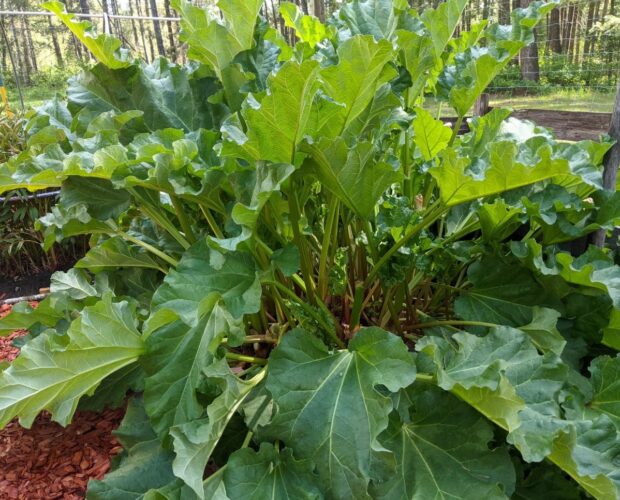
Rhubarb grows best in climates where the ground freezes in winter. In naturally cold climates, plant rhubarb in full sun. For hot, dry climates, make sure rhubarb gets afternoon shade and lots of water. Rhubarb is a perennial plant that will grow for many years in the same spot. Choose a location that can accommodate the growth of rhubarb. They can grow to about 3 feet in diameter and can sometimes grow as high as 6 feet tall.
Rosemary
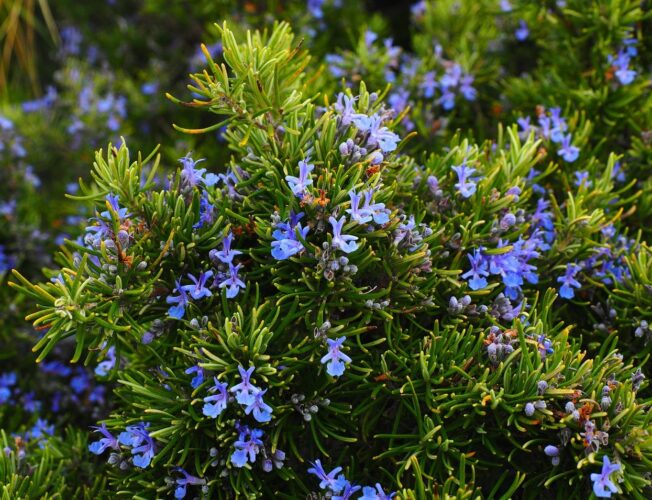
Rosemary – An evergreen shrub with beautiful blue flowers. Rosemary prefers full sun and well-drained soil. Rosemary does best in zone 8 or warmer but can be grown in containers in zone 7 and colder. Rosemary that is grown in a container in zone 7 and colder will need to be brought inside during cold weather.
Shasta Daisy
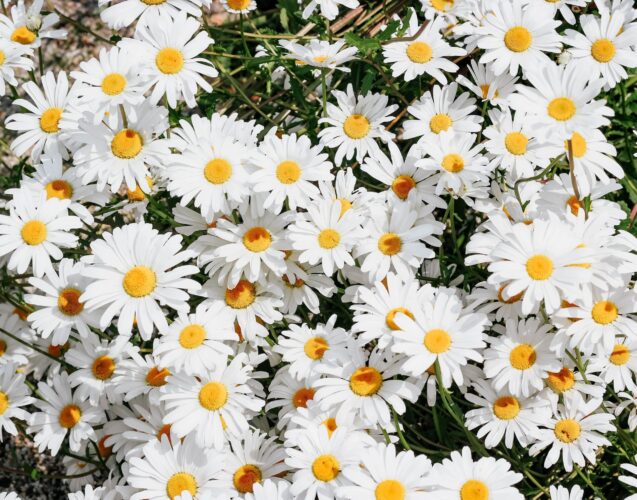
Shasta Daisy – Shasta daisies thrive in dry, sunny areas, and they can tolerate cold weather. They have the classic daisy appearance of white petals around a yellow center. Shasta daisies are perennial and return every spring or early summer and bloom until early fall. A wonderful addition to any garden.
Sunflower
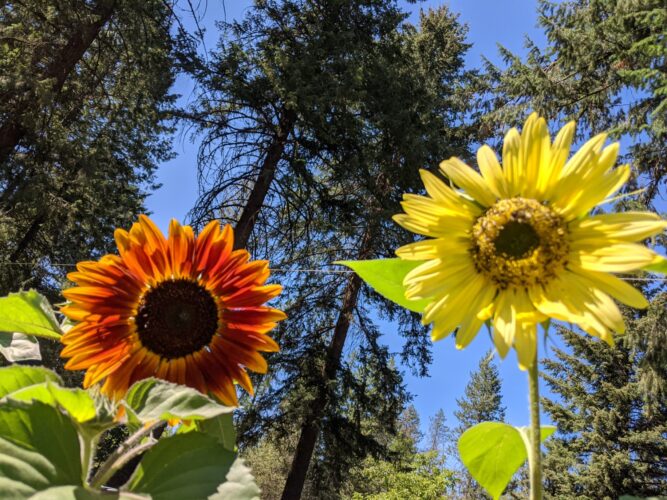
Sunflowers – Sunflowers are called sunflowers for a reason; they need full sun. Most sunflowers are annuals, which means they will not come back year after year. But it is easy to harvest and dry the seeds for planting the following year.
*Bonus*
Vegetable Gardens
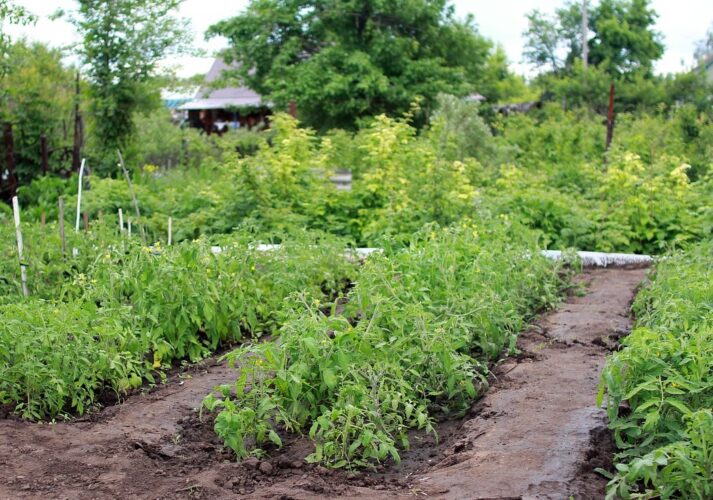
Vegetable Garden – Vegetable gardens are generally best positioned in the very sunniest location you can find with well-draining soil. The following 10 vegetables/fruits love the sun.
-Beans
-Corn
-Cucumbers
-Melons
-Okra
-Peas
-Peppers
-Tomatoes
-Squash
-Strawberries
- These gigantic blooms blaze with vibrant color and completely cover the small plants from early summer until frost, which you can't improve. What makes this Gazania line so special is its combination of very large blooms, an early and long bloom season, and ultra-tolerant, low-spreading plants.
- This Gazania is a sure winner in any flower bed due to its visual appeal and ongoing reliability. It has multicolored 4" flowers on compact 8 - 10" plants that will also spread 6 - 8".
- The flowers bloom in solid colors, from bright yellow to orange, red, pink, and white, or in wild color combinations in vibrant stripes or contrasting rings. Gazania is considered an annual in the North but is a short-lived perennial in the South. If you mess up the flowers and drop them where you want more, they reseed easily from flower seeds.
- Seeding Rate: 2 - 3 seeds per plant. Gazania is a tough little plant that likes full sun, tolerates all soils, and thrives with moderate watering. It blooms profusely in the south in fall, winter, and late spring, then intermittently in the hottest months of summer, then profusely again in fall.
- You can grow Gazania plants in clusters for a generous bedding ground cover, or you can even use this Gazania mix in hanging baskets or sunny patio containers. Gazania is native to South Africa and is easy and fun to grow.
- Freshest Wildflower Seeds: Our hummingbird and butterfly wildflower mix includes 24 beautiful annual, perennial and biennial plants. We offer the freshest seeds to enhance the quality of your garden, we ensure a high germination rate, 99% pure live seed, no filler
- Attract Pollinators: These flowers will attract pollinators to the garden, such as many beautiful butterflies, bumblebees, bees, ladybugs etc. It can beautify the environment and keep your garden alive!
- High Germination Rate: We meticulously test the germination rates of our seeds to ensure that a high proportion of the seeds you plant will successfully sprout and grow. These wildflowers grow well in spring and summer. They grow to an average height of 12 to 48 inches, covering 194 SQ.FT, about 5-10 days to germination, 35-75 days to flower
- High Quality Packaging: Our seed packs are resealable and provide optimal storage conditions to keeps seeds fresh. Our packaging material is aluminum foil, waterproof and moisture resistant. The planting instructions are displayed on the back of each package, You can also use our online guide to Learn how to grow wildflowers like a professional gardener
- Great Gift Choice: Groundio wildflower seeds make an ideal holiday gift. Perfect for Birthdays, Mothers' and Fathers' Days, Weddings, Thanksgiving Day, Valentine's Day and so on. You can also make the perfect combination of wildflower seeds for kids. Planting hummingbird and butterfly garden seeds is an easy and educational way to do it
- Wildflower Blends have a RESEALABLE POUCH - Helps wildflower seeds stay fresh by protecting them from moisture, which can cause premature germination or mold growth. It also shields the seeds from exposure to air and light, preventing them from drying out or losing viability over time. By keeping seeds in a sealed environment, the pouch ensures longer shelf life and better germination rates when planted.
- Multiple variations of wildflower seeds create a more colorful and vibrant mix because different species bloom in a variety of colors, shapes, and sizes, adding visual diversity. Since each flower has its own unique blooming period, the mix ensures continuous bursts of color throughout the growing season. Additionally, a diverse blend attracts a wider range of pollinators, enhancing the natural beauty and liveliness of the garden.
- 🌸 Wildflower Mix 🌿 🌼 Vibrant & Diverse Blooms – A stunning mix of colors, shapes, and sizes for a lively landscape.
- 🦋 Pollinator Magnet – Attracts butterflies, bees, and hummingbirds to support biodiversity.
- ☀️ Sun & Shade Adaptable – Thrives in various light conditions, from full sun to partial shade.
- EXOTIC CHOCOLATE CHERRY SUNFLOWER SEEDS: Premium open pollinated non GMO heirloom seeds; fresh seeds adapted zones 3-11; produce large 5-8" blooms that have deep burgundy to black cherry colored petals surrounding a warm chocolate brown center on 6-7 foot multi-branched sunflower plants
- POLLINATOR FRIENDLY GARDEN SEEDS: Attracts native bees, butterflies, pollinators, wildlife, and beneficial birds with large, chocolate centered blooms; low pollen variety perfect for cut flowers; supports garden ecosystem biodiversity and wildlife habitat
- ANNUAL SUNFLOWER 6-7 FEET TALL: Burgundy to mahogany blooms summer through fall; thrives in full sun well-drained soil; excellent cut flowers with long vase life; perfect for borders, raised beds, container growing, and companion planting
- DETAILED GROWING INFORMATION: Individual paper seed packets include clear planting instructions, germination tips, and seed-saving info, great for beginner or experienced gardeners growing vegetables, herbs, flowers, or native plants
- FAMILY OWNED USA SEED COMPANY: Heirloom non GMO open pollinated seeds from a trusted American family business, always fresh, untreated, tested for quality, and packed for long term storage and success in your garden
- 24 PERENNIAL PRAIRIE WILDFLOWERS – BOLD COLOR & ELEGANCE. Celebrate the enduring charm of American prairie flora with 24 perennial wildflower varieties. From juicy colors and dramatic forms to refined elegance, this seed mix brings continuous blooms, seasonal interest, and timeless visual impact to every garden. Hardy, stylish, and eco-friendly—perfect for classic landscapes and contemporary designs alike.
- PRAIRIE-BORN, NATURE-APPROVED – TOUGH AND BEAUTIFUL. These flowers thrive in a wide range of soils and climates, offering resilience and minimal maintenance. Enjoy high germination and excellent seed vitality with top-grade Non-GMO seeds. Whether your garden is rustic or refined, these varieties deliver bold textures, floral drama, and pollinator appeal without demanding care.
- AFRICAN DAISY, BLACK EYED SUSAN, BLUE FLAX. African Daisy features bright yellow-orange petals and intricate centers on full, bushy plants. Black Eyed Susan is a sunny American classic with golden blooms and rich, dark centers. Blue Flax produces delicate, sky-blue flowers daily throughout the season, thriving in heat, drought, and poor soil with effortless grace.
- CALIFORNIA POPPY, CHINESE FORGET ME NOT, CLARKIA. California Poppy, the state flower, glows in vivid orange with lacey foliage and reseeds naturally. Chinese Forget Me Not fills gardens with tender blue blooms and abundant clusters. Clarkia adds vertical color with tall spikes of coral-pink ruffled petals resembling delicate garden rosettes.
- COLUMBINE, CORN POPPY, CORNFLOWER. Columbine showcases two-layer petals, elegant spurs, and vivid color blends over ferny leaves. Corn Poppy’s large, flame-red blooms with thin stamens bring bold contrast. Cornflower dazzles with its ruffled, multi-layered blooms in vibrant violet and blue, offering a standout structure and deep garden charm.
- HEAT TOLERANT GRASS SEED - Our cool-season grass seed mix contains perennial rye, Kentucky bluegrass, and tall fescue. This turfgrass mix performs best in full sun to lightly shaded growing conditions due to its ability to tolerate heat.
- DROUGHT RESISTANCE - Our lawn seed produces grass with a waxy leaf coating, like the skin of an apple, that preserves moisture by limiting evaporation. This waxy coating also shields the grass leaves.
- SLOPES & SOUTHERN EXPOSURE - Black Beauty Sunny Grass Seed is great for slopes that dry out easily due to water run-off and in lawns with a southern exposure because of its heat and drought tolerance.
- PROVIDES A DARK GREEN LAWN - This grass seed mix produces healthy, dense, and attractive turf with a dark-green color. The best time to apply is mid-August to mid-October, or mid-March through mid-May.
- COMPLETE COVERAGE - This 1 lb bag will seed up to 425 sq. ft. for new lawns. For overseeding, this bag will seed up to 850 sq. ft. The germination time for Black Beauty Sunny Grass Seed Mix is 7 - 14 days.

